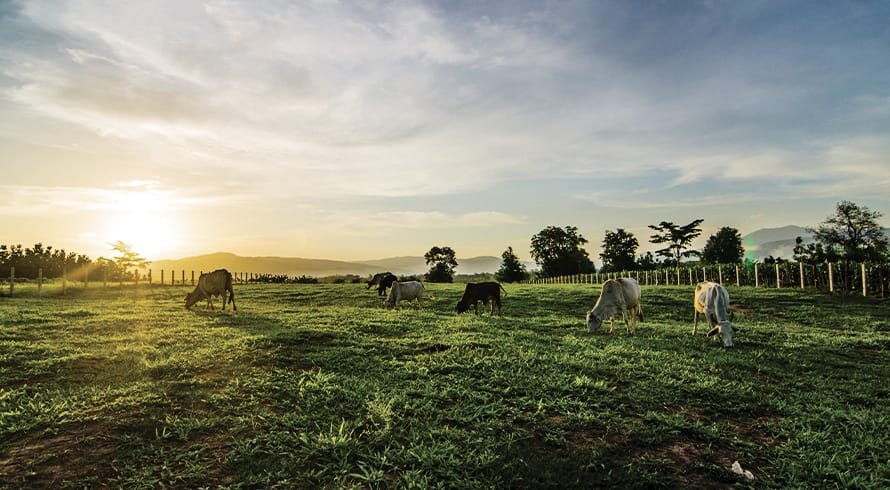Eskom’s grid allocation rules: On your marks, ready, set, halt!
At a glance
- The drastic increase in the need to connect new generation capacity to the national grid in order to manage the ongoing electricity supply crisis in South Africa has highlighted the shortcomings of the country's transmission and distribution network in areas where renewable energy resources are most concentrated.
- This led to Eskom publishing the controversial first version of the Interim Grid Capacity Allocation Rules (IGCAR) in June 2023, which primarily outlined a shift from the old 'first-come, first-served' framework to a new regime based on a 'first-ready, first-served' principle.
- The first version of the new IGCAR framework placed a significant amount of risk on independent power producers but following multi-faceted industry engagement led by the National Energy Crisis Committee, Eskom has announced a number of key amendments to the IGCAR.
Recently, the shortcomings of the country’s transmission and distribution network in these areas have become acutely apparent. The drastic increase in the need to connect new generation capacity to the national grid in order to manage the ongoing electricity supply crisis in South Africa has brought this issue sharply into focus.
The impact of highly saturated and constrained power corridors, especially in the Western Cape and Northern Cape provinces where solar and wind resources are most abundant, was evident in Bid Window 6 of the Renewable Energy Independent Power Producer Procurement Programme. Of a total of 5,2 GW available, only six solar PV projects, comprising a total of 1,000 MW, were awarded preferred bidder status, with grid constraints in the Western and Northern Cape being cited as the main reason for the failure to procure more.
Interim Grid Capacity Allocation Rules
The urgent need to address grid constraints led to Eskom publishing the controversial first version of the Interim Grid Capacity Allocation Rules (IGCAR) in June 2023, which primarily outlined a shift from the old ‘first-come, first-served’ framework to a new regime based on a ‘first-ready, first-served’ principle.
In terms of the former ‘first-come, first-served’ principle, electricity generation projects that applied for grid connection the earliest were given priority in the queue for grid access. This model created the problem that many electricity generation projects (both public and private) were allocated grid capacity long before it was clear that the projects would be able to obtain all consents and funding necessary for them to successfully and timeously reach financial close and commercial operation, thus barring grid connection for other players with better developed projects.
Under the ‘first-ready, first-served’ principle of the IGCAR, Eskom will only allocate grid capacity and issue a budget quote for grid connection to electricity generation projects that are ‘shovel-ready’. Furthermore, Eskom will have the right to revoke the budget quote should there be a failure on the part of the independent power producer (IPP) to comply with any of the conditions further stipulated in the connection budget quote.
The first version of the new IGCAR framework placed a significant amount of risk on an IPP, in so far that the IPP would be required to obtain most consents, at its own cost and without the knowledge of whether or not the grid capacity would be allocated by Eskom for the project to connect.
In response to this, in the matter of Kudusberg Wind Farm (Pty) Ltd and Others v Eskom Holdings SOC and Others, Kudusberg Wind Farm (Pty) Ltd (Kudusberg), instituted a two-part application to, firstly, interdict the implementation of IGCAR and, secondly, have the rules reviewed and set aside. The Johannesburg High Court dismissed the interdict application at the end of July 2023, and ultimately the second part of the application was withdrawn by Kudusberg early in September 2023, after it reached a settlement with Eskom.
IGCAR Amendments
The settlement can be attributed to a multi-faceted industry engagement led by the National Energy Crisis Committee (NECOM), which facilitated talks between Eskom, the South African Government (Government) and various renewable energy industry players and associations. The outcome of the NECOM talks was that Eskom announced a number of key amendments that had been made to the IGCAR. Full details of the amendments to the IGCAR are yet to be released, but in summary, the revised IGCAR provides for the following amended project readiness evaluation criteria:
- Environmental consents – having obtained all necessary authorisations and water use licences (WUL) in respect of the generation facility.
- The requirements to have a WUL in hand as well as civil aviation authority approval had been relaxed with IPPs now only required to demonstrate that they have applied for these licences.
- Power purchase agreement heads of terms duly signed with the end-user of the power or a licensed energy trader and confirmation from the offtaker.
- Confirmation of appointment of design consultants accepted by Eskom, where grid connection works will be undertaken through the self-build scheme for handover to Eskom on completion.
- Requirements surrounding land use permission for the construction of projects have also been relaxed. While IPPs are required to own or have a lease with a landowner in place prior to Eskom issuing a budget quote, IPPs will no longer be disqualified from securing a connection budget quote if permission to sub-divide the land for non-agricultural use has not yet been secured. However, Eskom has indicated that projects with sub-division permission in place will be prioritised.
- Measured data for the primary energy resources, as applicable (minimum two years for wind and one year for solar PV).
- The requirement for IPPs to show two years of measured data for wind farm sites and one year for solar has also been relaxed in so far that IPPs are now only required to show one year of measured data for wind and provide satellite data for solar PV projects, provided it is from a reputable source.
- Applicants are required to furnish Eskom with a grid capacity allocation guarantee issued by a financial institution approved by Eskom immediately following confirmation that the project meets all other criteria.
- Further amendments are still under negotiation.
New opportunities
The saturation of the power corridors in the Northern Cape and the need for base-load energy created an opportunity for the Government to introduce innovative solutions to alleviate the burden faced by the national grid while also bolstering economic activity.
One of these solutions comes in the form of the Battery Energy Storage Capacity IPP Procurement Programme (BESIPPPP) issued by the Department of Mineral Resources and Energy, which is primarily aimed at transmission and distribution congestion relief to evacuate additional generation capacity. The first round of BESIPPPPP was launched in March 2023 for the procurement of 513 MW of battery storage capacity to be installed at sites situated in the Northern Cape. With the rollout out of BESIPPPP, it is predicted that the IPP office will seek to procure an additional 6,6GW of battery storage for the national grid by 2032, which presents a massive opportunity for players in the energy market.
In addition, it is anticipated that South Africa needs more than R200 billion to finance the expansion of the national grid, and with Eskom’s constrained balance sheet, the Government is looking to partner with participants in the private sector to assist in financing the expansion of the national grid to accommodate new renewable energy solutions. The Minister of Electricity has announced that a transmission development plan for the expansion of the transmission network will be submitted to Cabinet by October 2023, and while the discussions are developing, the opportunity presented to the private sector cannot be understated.
The information and material published on this website is provided for general purposes only and does not constitute legal advice. We make every effort to ensure that the content is updated regularly and to offer the most current and accurate information. Please consult one of our lawyers on any specific legal problem or matter. We accept no responsibility for any loss or damage, whether direct or consequential, which may arise from reliance on the information contained in these pages. Please refer to our full terms and conditions. Copyright © 2024 Cliffe Dekker Hofmeyr. All rights reserved. For permission to reproduce an article or publication, please contact us cliffedekkerhofmeyr@cdhlegal.com.
Subscribe
We support our clients’ strategic and operational needs by offering innovative, integrated and high quality thought leadership. To stay up to date on the latest legal developments that may potentially impact your business, subscribe to our alerts, seminar and webinar invitations.
Subscribe



